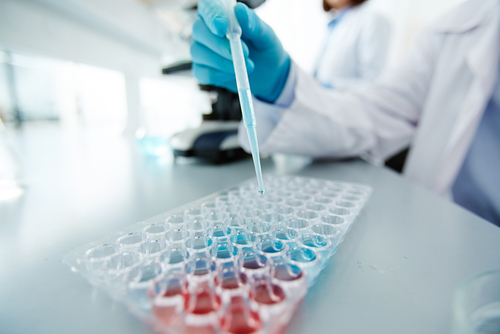Scientists Develop New Compound That Could Potentially Slow Parkinson’s Progression

Researchers have developed a new compound, called S-181, that can improve nerve cell function and decrease the build-up of disease-related harmful molecules by boosting the activity levels of the enzyme beta-glucocerebrosidase.
That enzyme’s function is known to be compromised in Parkinson’s disease.
The findings, “A modulator of wild-type glucocerebrosidase improves pathogenic phenotypes in dopaminergic neuronal models of Parkinson’s disease,” were published in the journal Science Translational Medicine.
Mutations in the GBA1 gene are one of the most common genetic risk factors for Parkinson’s. The GBA1 gene contains instructions to produce an enzyme, called beta-glucocerebrosidase (GCase), which is active in lysosomes — special compartments within cells that break down and recycle different types of molecules.
If GCase fails to work as it is supposed to, toxic substances accumulate inside dopamine-producing cells, leading to the excessive inflammatory and neurodegenerative processes that are observed in Parkinson’s.
Therefore, and in theory, boosting GCase activity could potentially slow down disease progression.
Northwestern University scientists now took a different approach than the one currently attempted by researchers: instead of trying to fix the mutated version of the GCase enzyme, they attempted to increase the levels of its normal form in cellular and animal models of Parkinson’s.
The team developed a small-molecule modulator of GCase called S-181 and tested its function in dopaminergic neurons. These neurons were derived from induced pluripotent stem cells (iPSC) from sporadic or non-inherited (also known as non-familial) Parkinson’s patients, as well as from individuals with low GCase levels and with mutations in the GBA1, LRRK2, PARK7, or PARKIN genes — all of which have been associated with the neurodegenerative disorder.
iPSCs are master cells that can potentially produce any cell or tissue the body needs to repair itself. They are derived from either skin or blood cells, and then are reprogrammed back into a stem cell-like state, which allows for the development of an unlimited source of almost any type of human cell.
In this case, cells were derived from skin cells, also known as fibroblasts. Because they are derived from patients, the “novel daughter cells” will carry the same genetic defects as those found in the original cells.
S-181 binds to GCase and modulates its activity. Treating these patient-derived neurons with S-181 partially restored lysosomal function and lowered accumulations of Parkinson’s-related toxic molecules, including oxidized dopamine and glucosylceramide. It also decreased accumulations of alpha-synuclein, one of the main components of Parkinson’s hallmark protein deposits — called Lewy bodies.
Mice with a mutated GBA1 gene also were treated with S-181. The treatment boosted the activity of non-mutated GCase and reduced the production of barely active GCase-dependent harmful molecules, decreasing alpha-synuclein build-up in the brain.
“This study highlights wild-type GCase activation as a potential therapeutic target for multiple forms of Parkinson’s disease,” Dimitri Krainc, MD, PhD, chair of neurology and director of the Center for Neurogenetics at Northwestern University Feinberg School of Medicine, said in a press release.
“Our work points to the potential for modulating wild-type GCase activity and protein levels in both genetic and idiopathic forms of PD [Parkinson’s disease] and highlights the importance of personalized or precision neurology in development of novel therapies,” said Krainc, the study’s lead author.
Two years ago, a previous study by the same team showed that some of the molecular features of Parkinson’s are only present in human nerve cells and not in Parkinson’s animal models. Those findings illustrated the importance of investigating the disease mechanism and developing new medications using patient-derived neurons.
“It will be important to examine human neurons to test any candidate therapeutic interventions that target midbrain dopaminergic neurons in PD,” Krainc concluded.






